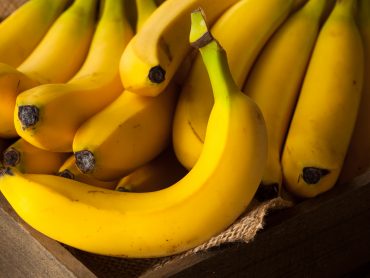Bringing in Blue Zone Foods
As New Year’s Eve approaches, we all succumb to the perfunctory promises of self-improvement for the following 12 months. With 2020 being the dumpster fire that it is, the bar is probably a lower for goals heading in 2021 over past years. Nevertheless, I bet that staying in shape or incorporating some form of healthier eating habits tops the list.
Importantly, if you have dietary resolutions, no doubt your guests do, too. And they’ll be looking for hotels to accommodate their needs accordingly. With most diets continually trending in the direction of healthier, cleaner, organic, local, more plant-based and many other modern criteria, it’s important that hotel restaurants periodically renew their menu to keep apace of this demand, especially in light of fewer travelers overall and the dire need for product differentiation heading into 2021.
On a fundamental level, this should be done to ensure that hotel restaurants are adequately providing for their guests by offering acceptable foods to meet their various dietary restrictions. But it can also mean increased revenues.
Innovations insofar as creative new dishes that are vegan or using only organic and locally sourced ingredients can command greater price points as well as help to attract high-end clientele. This can have a ‘halo’ on rooms revenue as product differentiation in the F&B space can give guests a heightened reason to stay with you over the competition. Any resultant prestige can thus be factored into potential RevPAR growth and also to garner more local awareness.
All told, with dietary habits changing so quickly nowadays, this is not something you can ignore. But there’s one other emerging trend that may perhaps be more to your liking than, say, expensively converting a kitchen to be entirely plant-based.
As per the title, I am referring to foods from our planet’s renowned Blue Zones, those semi-isolated and largely agrarian regions peppered across multiple continents where the inhabitants quite often reach triple digits of lifespan. Based on a lot of research from various agencies as well as an eponymous book on the subject, the five key zones identified are:
- The islands of Okinawa, Japan
- The island of Sardinia, Italy
- The island of Ikaria, Greece
- The Nicoya Peninsula in Costa Rica
- The town of Loma Linda in California, particularly its Seventh Day Adventist population
The idea of blue zone foods came about during a late 2019 strategic planning session for a resort where my consultancy was recruited to help relaunch the signature dining outlet. During this meeting, it was deemed that going wholly vegan didn’t fit with the overall brand nor target demographic, but that some measures towards healthier, plant-based food options needed to be incorporated in order to fit with the long-term vision of moving into the wellness space.
By adding a single dish on the menu, it helped us address this demand without any additional strain on the kitchen team or increasing ingredient costs. In this instance, the item we added was a ‘Blue Zone Minestrone’ that echoed the traditional hearty Sardinian soup with a variety of vegetables, beans, whole grain pasta and fresh herbs simmering away for hours on end and perfect for a filling winter lunch. Moreover, inserting the actual words ‘blue zone’ into the title garnered a lot of attention from patrons who then inquired about what it meant, and subsequently praised our efforts upon learning about the longevity-inducing abilities of said foods.
Although blue zone foods are indeed mostly plant-based, my hope in bringing this to your attention is so that you know there are other variations upon the broad progression towards vegetarian, flexitarian and vegan lifestyles that you can deploy to gain a marketing edge over your competitors. And if you have any blue zone recipes at the ready, I’d love to give them a try!
(Originally posted on Hotel-Online on December 30, 2020)



